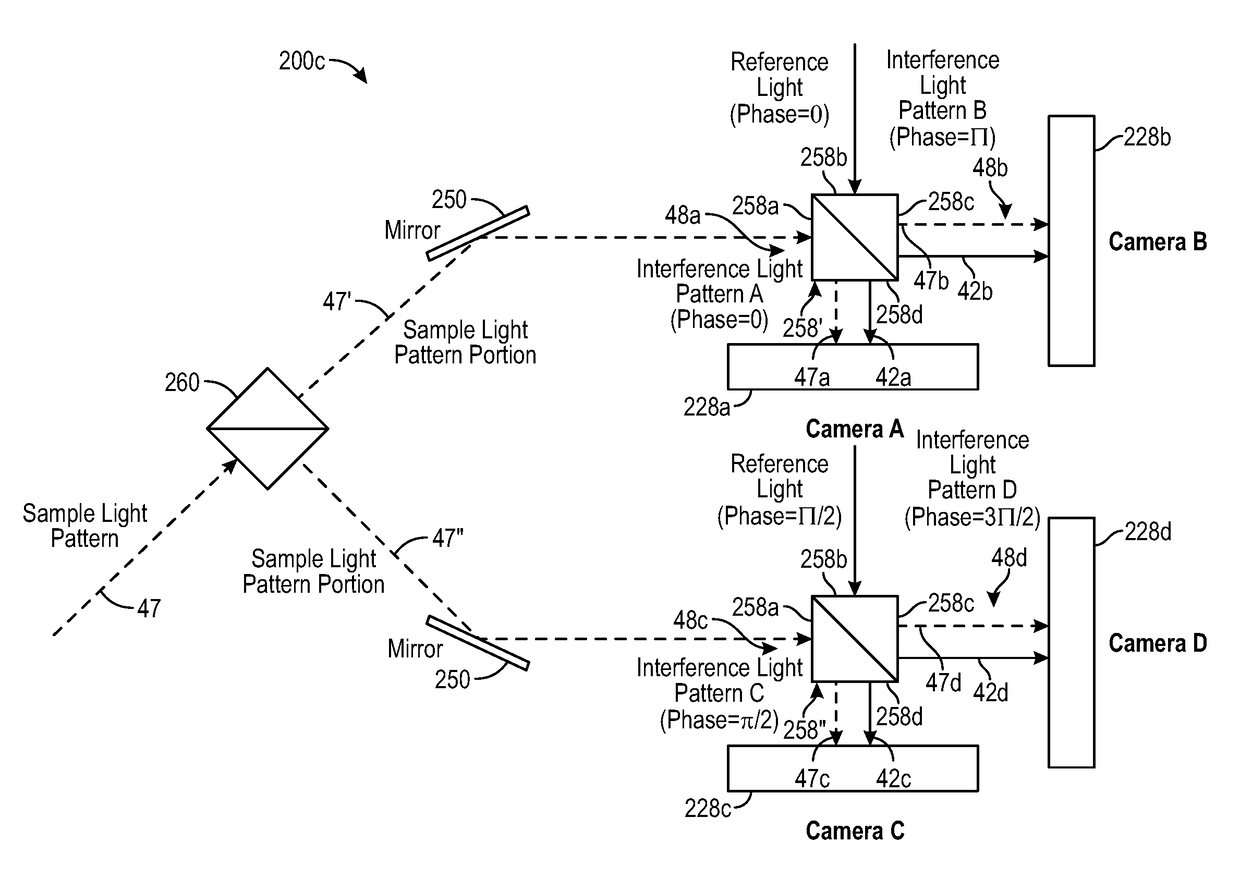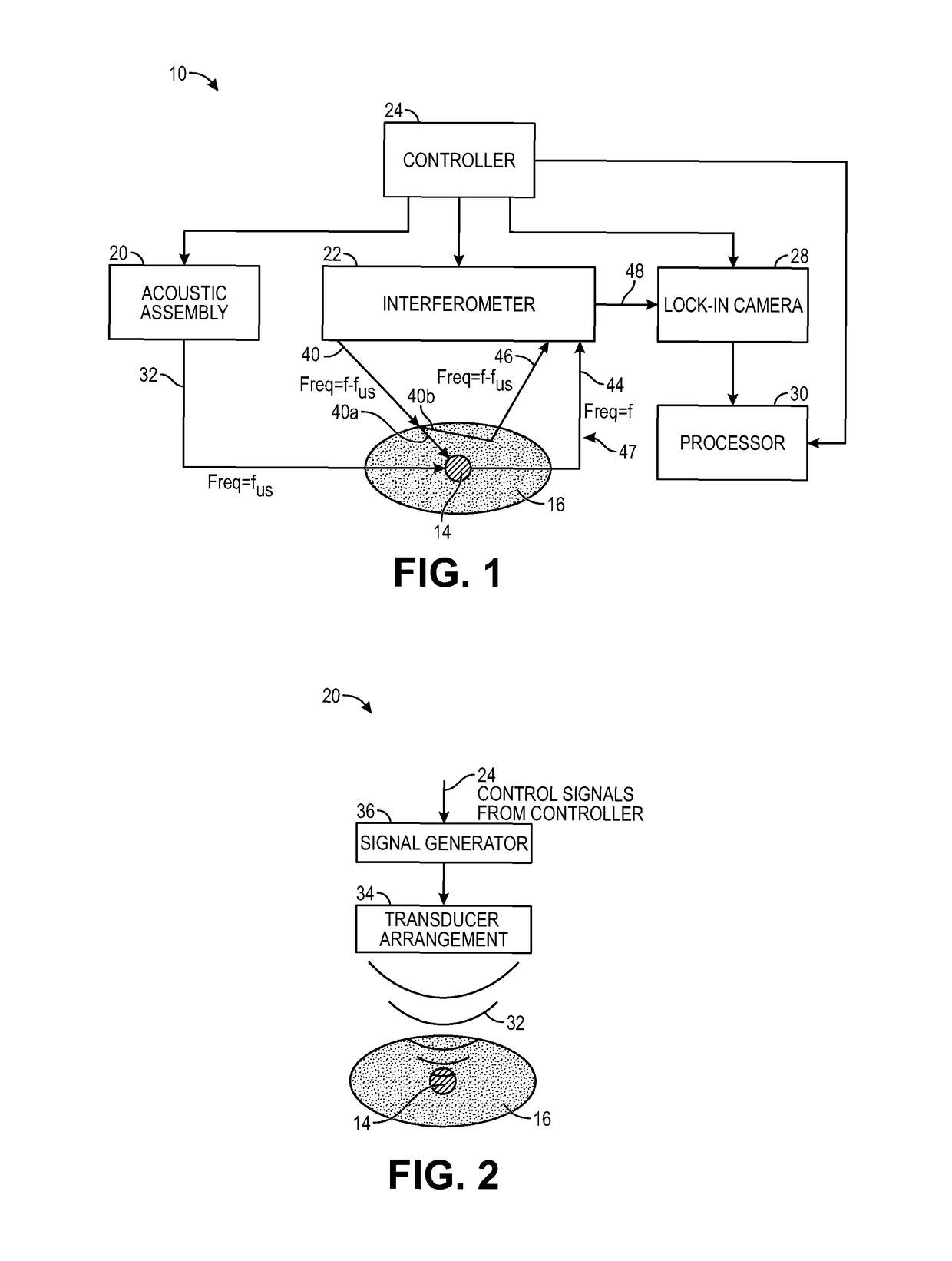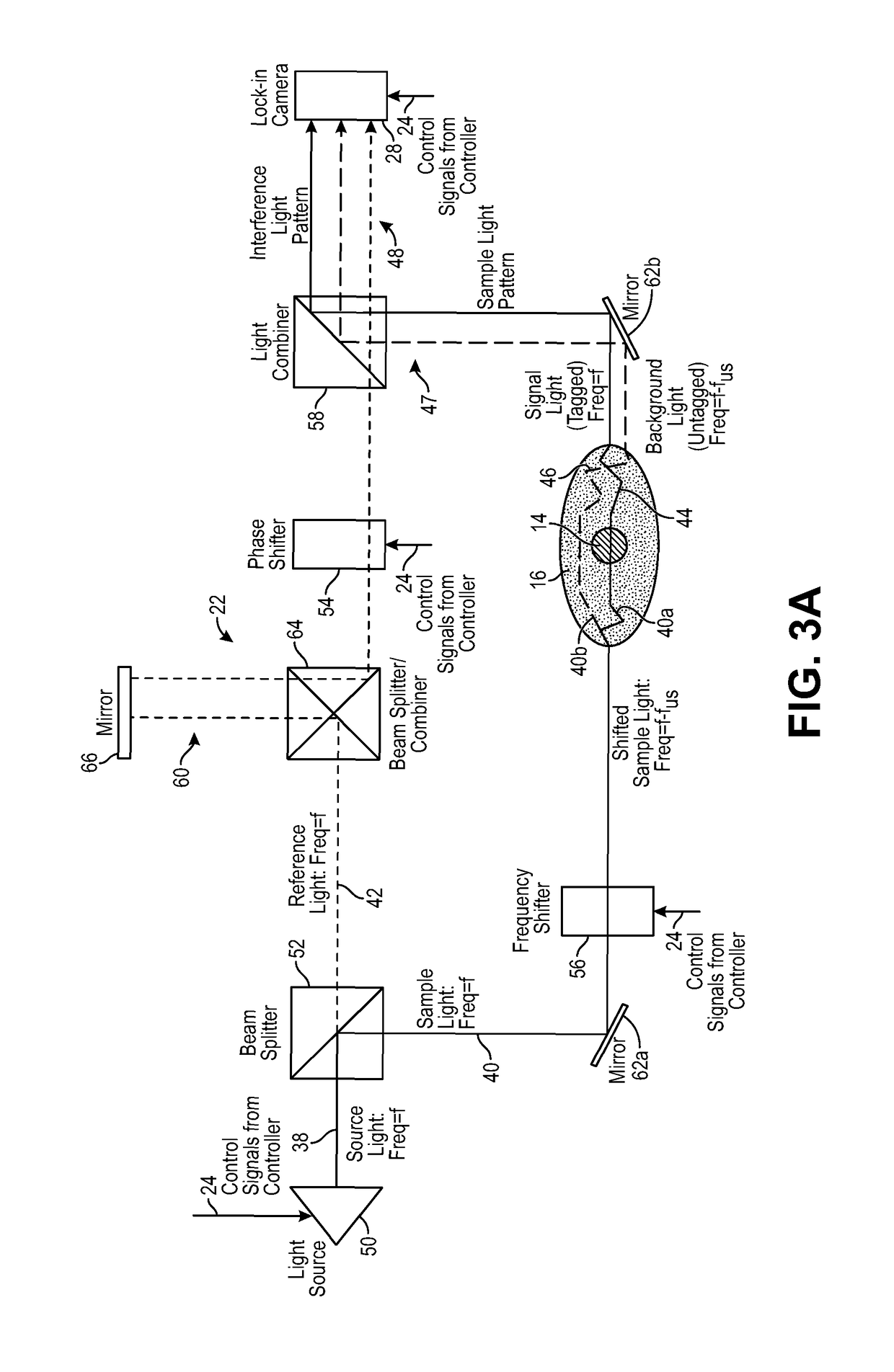System and method for simultaneously detecting phase modulated optical signals
a phase modulated optical signal and phase modulation technology, applied in the field of methods and systems for noninvasive measurements in the human body, can solve the problems of limited spatial resolution that cannot be obtained by a conventional optical detector, order of centimeters, and limited spatial resolution
- Summary
- Abstract
- Description
- Claims
- Application Information
AI Technical Summary
Benefits of technology
Problems solved by technology
Method used
Image
Examples
Embodiment Construction
[0073]The ultrasound modulated optical tomography (UOT) systems described herein utilize the combination of a pulsed ultrasound sequence that tags light propagating through an anatomical structure, and a selective lock-in camera that detects the tagged light (e.g., via parallel speckle detection (PSD)), as opposed to a conventional camera, to provide a highly efficient and scalable scheme that enables detection of highly localized and high spatial resolution UOT signals (e.g., blood-oxygen level dependent signals) at great depth inside a biological specimen, e.g., noninvasively through the entire thickness of the human skull and into the underlying cerebral cortical brain matter. The UOT systems may utilize a specific homodyne interference scheme that enables shot noise limited detection of the signal light. Such UOT signals may be used for, e.g., brain-computer interfacing, medical diagnostics, or medical therapeutics. Although the UOT systems are described herein as being used to ...
PUM
 Login to View More
Login to View More Abstract
Description
Claims
Application Information
 Login to View More
Login to View More - R&D
- Intellectual Property
- Life Sciences
- Materials
- Tech Scout
- Unparalleled Data Quality
- Higher Quality Content
- 60% Fewer Hallucinations
Browse by: Latest US Patents, China's latest patents, Technical Efficacy Thesaurus, Application Domain, Technology Topic, Popular Technical Reports.
© 2025 PatSnap. All rights reserved.Legal|Privacy policy|Modern Slavery Act Transparency Statement|Sitemap|About US| Contact US: help@patsnap.com



